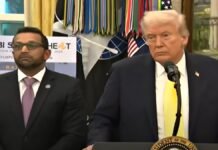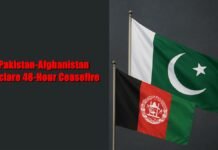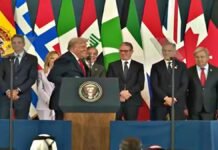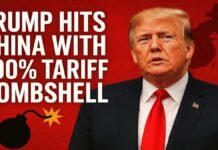
Key Points
- Donald Trump announced a US-Pakistan deal to jointly develop “massive” oil reserves, hours after imposing new tariffs on Indian goods.
- Trump suggested that oil from this partnership could be exported to India in the future.
- However, experts caution that Pakistan’s proven oil reserves are modest and years away from large-scale extraction.
- Significant investments (over $5–30 billion) and improved security conditions are needed before commercial viability can be confirmed.
- Deal includes broader economic cooperation trade, energy, and technology but extraction is challenged by unstable politics and difficult terrain.
New Delhi: In a move making global headlines, US President Donald Trump revealed a “landmark” agreement for joint development of Pakistan’s oil reserves, describing untapped resources as “massive” and hinting they could supply oil to India someday. The announcement, made on Truth Social, coincided with tough new US tariffs on India and heightened scrutiny of India’s trade with Russia.
What’s In The Deal?
- The agreement centers on the US partnering with Pakistan to explore and develop potential oil reserves, with a leading US oil company to be selected for the project.
- The trade pact also covers tariff reductions for Pakistani exports to the US, market access, and cooperation in sectors like energy, minerals, IT, and cryptocurrency.
- Trump’s timing coming right after tariffs on India suggests a deepening of US-Pakistan ties amid shifting regional alliances.
How Big Are Pakistan’s Oil Reserves And Are They Exploitable?
Proven vs. Potential
- Proven reserves: As of 2016, Pakistan had about 353.5 million barrels of proven oil, just 0.021% of the world’s total, ranking 52nd globally.
- At current consumption rates (approx. 550,000 barrels/day), those reserves would last under two years, meaning Pakistan imports about 85% of its oil needs.
- “Massive” new reserves? Recent surveys in offshore Indus and Makran Basins have sparked speculation of much larger, possibly world-ranking oil/gas discoveries.
- Initial surveys suggest potential, but there is no confirmed commercial drilling or evidence of massive new reserves yet.
Location and Extraction Challenges
- Key survey areas: Khyber Pakhtunkhwa, Sindh, Punjab (Attock), and offshore (Indus/Makran).
- Experts estimate it may take $5 billion and at least 4–5 years just to confirm, drill, and begin extraction from these blocks.
- Significant reserves (like 235 trillion cubic feet of gas) are cited, but extracting even 10% may take $25–30 billion and over a decade.
- Security, political instability, and a lack of infrastructure discourage international oil majors from taking big risks in Pakistan for now.
- Existing refineries can process around 450,000 barrels/day already stretched by internal demand.
Has Anyone Else Tried Before?
- Pakistan’s last major onshore oil and gas finds date back to the Sui gas field (1952) and smaller fields in Punjab and Sindh.
- Major foreign investment has been cautious, with previous efforts hindered by cost, security, and lack of clear returns.
What Are The Geopolitical Stakes?
- Trump’s overture to Pakistan is seen in context of pressuring India and countering its energy-trade alignment with Russia.
- Pakistan is keen to attract US investment and lower tariffs on its exports this deal promises both, but real energy dividends may take a decade or more to materialize.
- Theoretical oil exports from Pakistan to India would require not just infrastructure and reserves, but a dramatic shift in regional politics and trade ties.
Trump’s announcement brings Pakistan new hope for oil sector investment and major attention to its “untapped” energy potential. However, claims of “massive” oil reserves remain unproven until confirmed by commercial drilling and sizable infrastructure investments. Most experts predict it’ll be at least 4–5 years and billions of dollars before any real oil flows, if at all. Meanwhile, the deal marks a strategic pivot in South Asian energy and US foreign policy but for now, remains more promise than petroleum.


















































